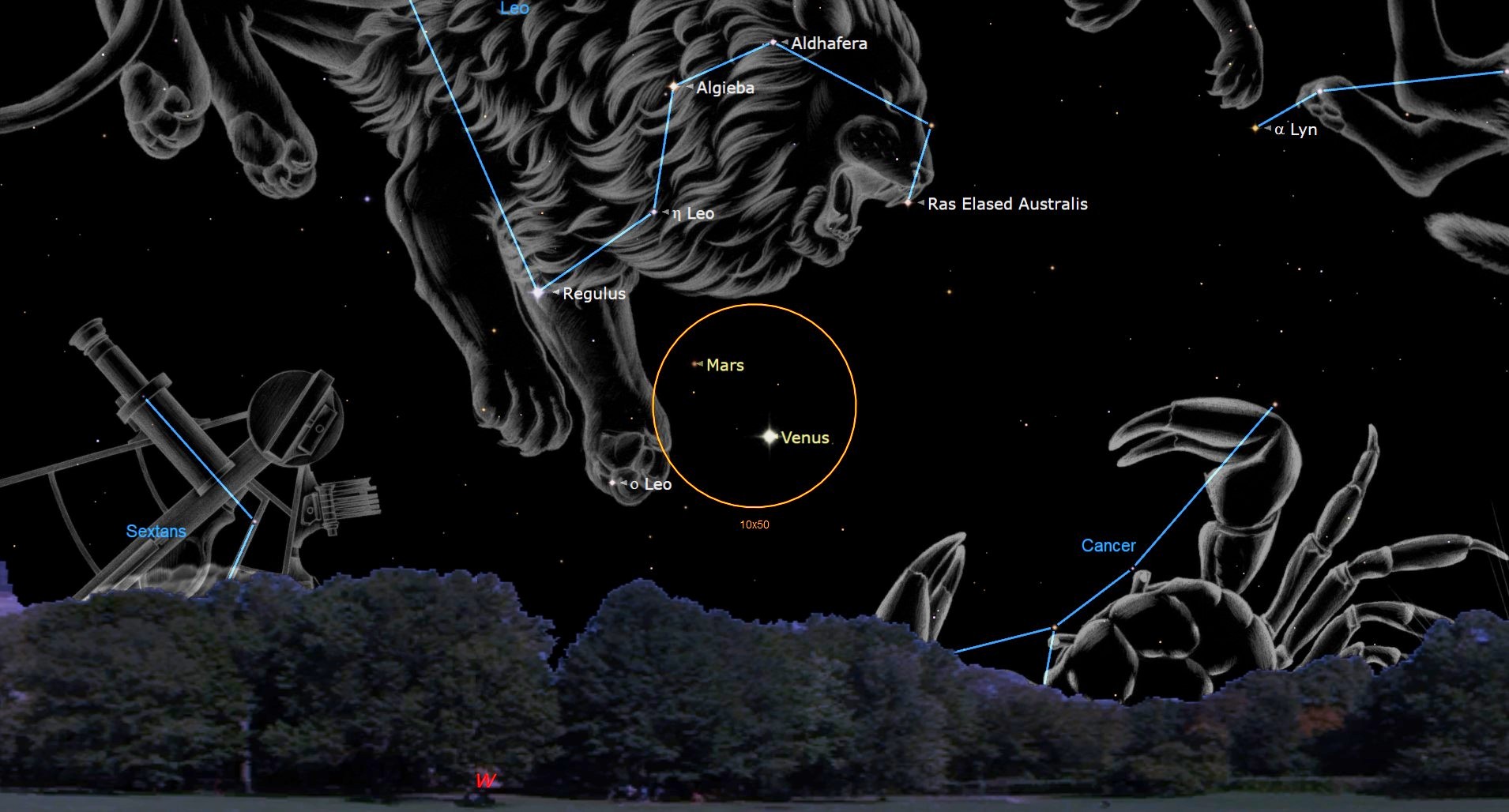Mars, Venus and Neptune put on a summer skywatching show tonight. Here's how to see it.
Neptune will be a little more difficult to spot than its closer-in neighbors.

Three of the visible planets will make for interesting skywatching targets tonight (June 30), though one will require staying up late.
Mars and Venus will make a close approach in the night sky tonight and will be visible at sunset. Look to the west when darkness falls and find the pair just below the Leo constellation, the Lion. They will be separated by just 3 degrees, or around one-third of the width of your hand held at arm's length. The pair will set some 2.5 hours after the sun sets, disappearing around 11 p.m. ET (0300 GMT on Saturday, July 1).
Meanwhile, the much more elusive Neptune will rise over the horizon to the east just after midnight on Saturday. Its appearance marks the beginning of what is known as retrograde motion, meaning the planet will begin moving westward through the constellations rather than its regular eastward motion.
Related: Night sky, June 2023: What you can see tonight [maps]

Looking for a telescope to observe Mars, Venus or anything else in the sky? We recommend the Celestron Astro Fi 102 as the top pick in our best beginner's telescope guide. Don't forget colored filters to make the details on planets stand out!
Mars and Venus should be fairly easy to locate; Venus is still quite bright in the night sky during what's known as its evening apparitions, meaning it appears at night. The planet is approaching its brightest, which should occur on July 7 when it reaches magnitude -4.7 (The lower the magnitude, the brighter the object.). By the end of July, Venus will set earlier and earlier until it begins appearing in the morning by mid-August.
Mars will be somewhat fainter, although its proximity to bright Venus should help skywatchers find it. Look for a reddish, steady orb (not twinkling) just above and to the left of the "evening star" Venus.
The moon will be fairly bright tonight at 92% illuminated as it approaches the full moon phase on July 3. But it will set around 3 a.m. ET (0700 GMT) on July 1, just in time to try and spot Neptune.
Get the Space.com Newsletter
Breaking space news, the latest updates on rocket launches, skywatching events and more!
Skywatchers interested in seeing Neptune enter retrograde motion will have to stay up much later, as the planet won't appear and begin rising above the horizon until the early morning hours on Saturday. If you haven't observed Neptune before, just note that due to being the most distant planet in our solar system, the ice giant appears quite small and can be faint. Neptune will appear just above the Cetus constellation, the Whale, although if you are unfamiliar with locating it, it might be easier to use a stargazing app on your computer or mobile device.
The phenomenon of retrograde motion occurs due to the fact that Earth orbits the sun; as our position in the solar system changes, so too does our perspective when viewing distant objects like Neptune.
If you want to take a closer look at the planets of the night sky, our guides to the best telescopes and best binoculars are a great place to start.
And for tips on photographing the night sky in general, check out our guide on how to photograph the moon and our rundowns on the best cameras for astrophotography and best lenses for astrophotography.
Editor's Note: If you snap an image of Venus, Mars or Neptune and would like to share it with Space.com's readers, send your photo(s), comments, and your name and location to spacephotos@space.com.
Join our Space Forums to keep talking space on the latest missions, night sky and more! And if you have a news tip, correction or comment, let us know at: community@space.com.

Brett is curious about emerging aerospace technologies, alternative launch concepts, military space developments and uncrewed aircraft systems. Brett's work has appeared on Scientific American, The War Zone, Popular Science, the History Channel, Science Discovery and more. Brett has English degrees from Clemson University and the University of North Carolina at Charlotte. In his free time, Brett enjoys skywatching throughout the dark skies of the Appalachian mountains.









